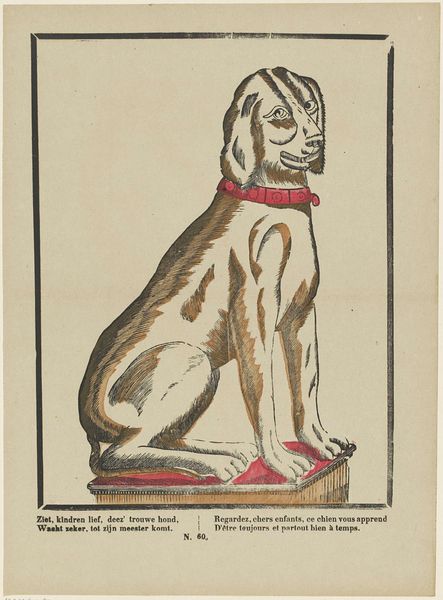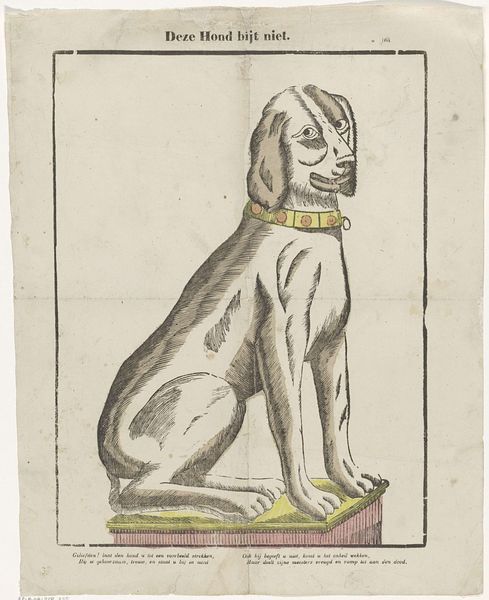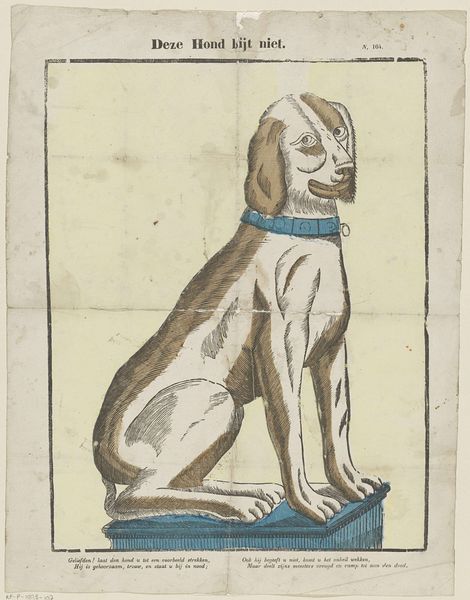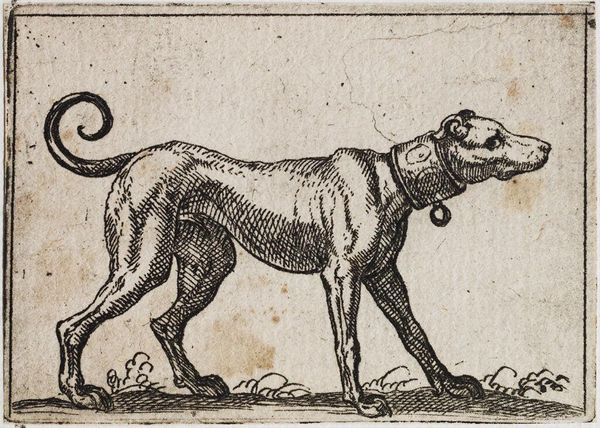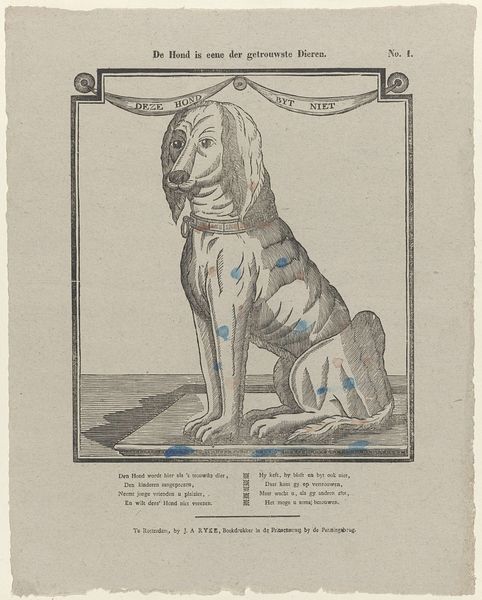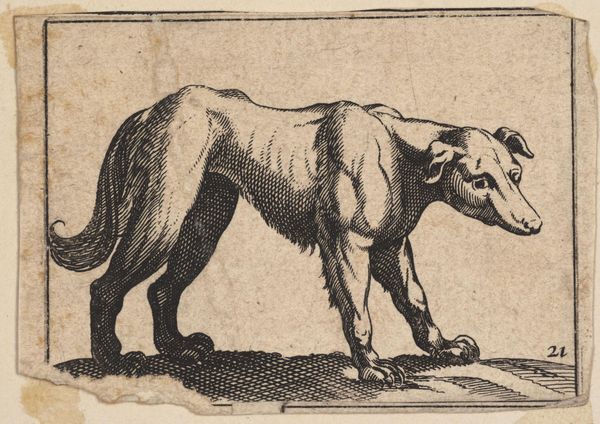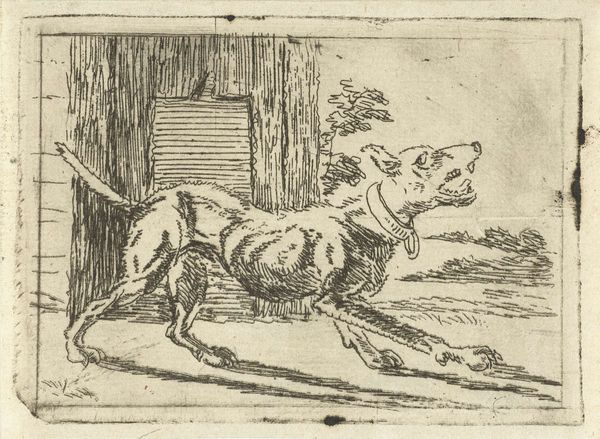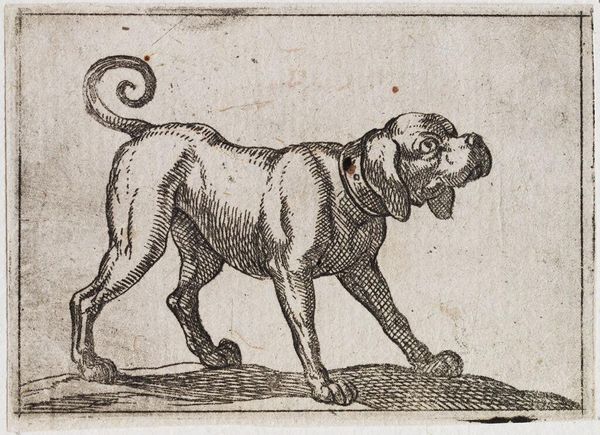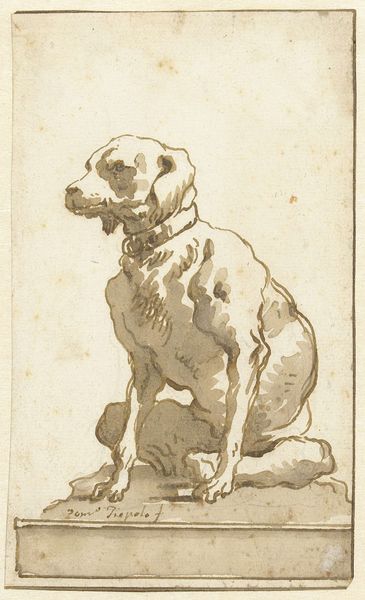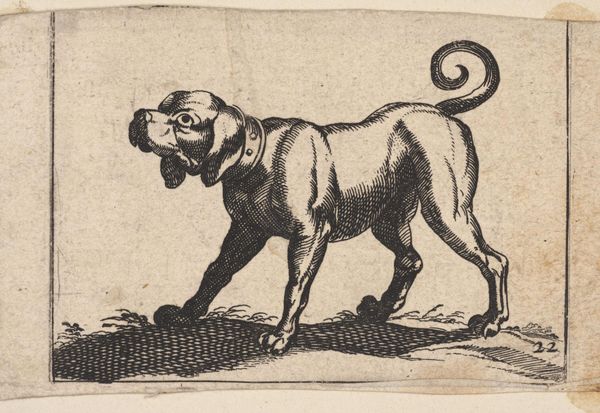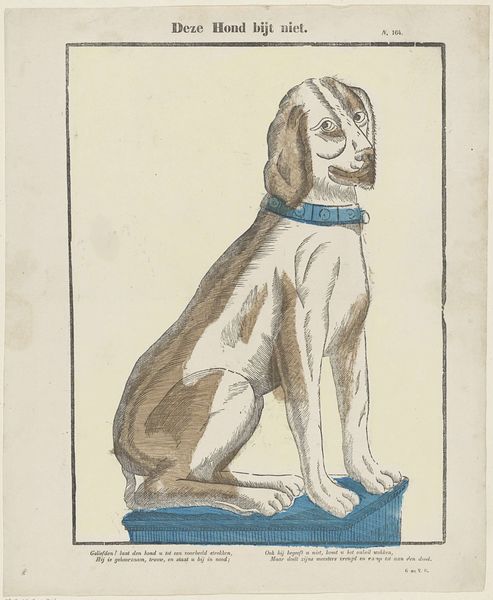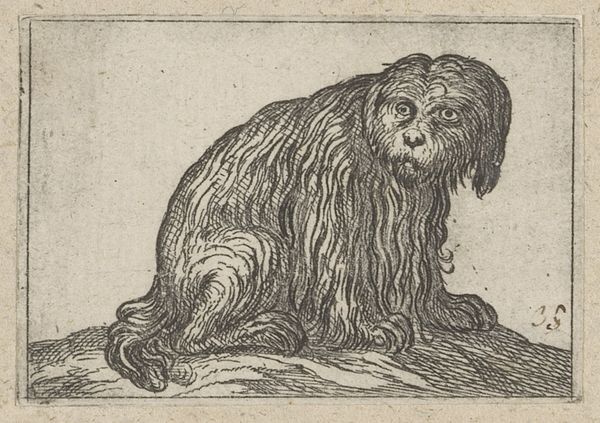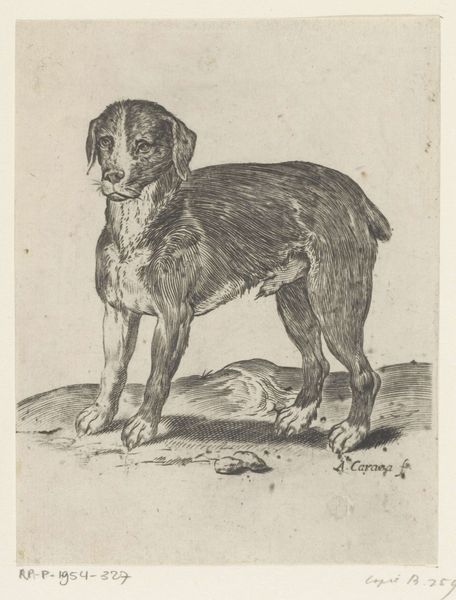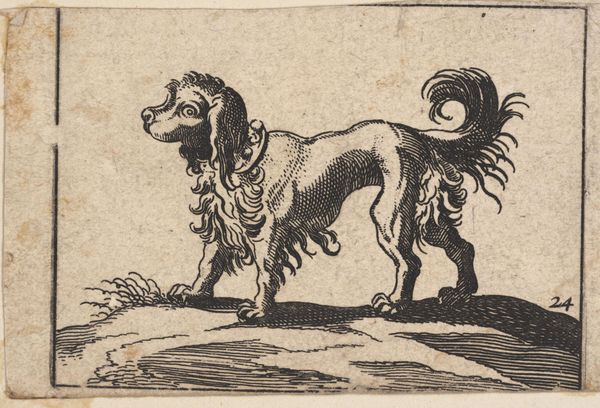
print, engraving
#
dutch-golden-age
# print
#
figuration
#
line
#
genre-painting
#
engraving
Dimensions: height 387 mm, width 305 mm
Copyright: Rijks Museum: Open Domain
Curator: Welcome. We’re looking at a piece from between 1761 and 1804 attributed to Erven de Weduwe Jacobus van Egmont. It’s an engraving called “Deeze Hond byt niemand,” currently held at the Rijksmuseum. Editor: Immediately, the heavy lines give it a severe quality. It reminds me of the stoicism in some 18th-century portraiture. The limited tonal range reinforces the graphic quality of the print, giving it real presence, especially at this scale. Curator: The image shows a dog, possibly a hunting breed, sitting patiently within a checkered frame, attached by a chain to what looks like a discarded lock. The Dutch text translates to "This dog bites no one". This hints at its symbolic meaning of loyalty and harmlessness, common virtues espoused during that era, specifically towards the youth. Editor: I’m struck by the contrast between the ornamental collar and the heavy chain, the lines emphasizing its physical restraint even as the title assures us of its gentleness. There’s a tension there that animates the whole composition. Curator: It's true; the artist uses familiar dog iconography—representing faithfulness, service, watchfulness—but in the context of children’s education and upbringing. The dog, therefore, isn't just a creature but a didactic symbol of good behavior. It subtly imparts moral guidance using an approachable and familiar subject. Editor: Looking closely at the execution, I appreciate how the line work gives the animal volume, suggesting a specific kind of coarse fur without overwhelming detail. This speaks to a balance between representation and didactic purpose—avoiding being overly sentimental while driving the message home through structure. Curator: Exactly. We can imagine this print serving as a kind of moral anchor, reminding the viewer about proper behaviour—fidelity to masters or friends. In households of that era, its constant presence would underscore those expected values. Editor: Yes, I’m increasingly aware of how much these elements shape my experience. Initially, I found the lines harsh, but now, in light of our discussion, that very austerity serves to amplify the work's seriousness. It's no longer just a decorative print; the method amplifies the meaning, ensuring that no one could trivialize the intent.
Comments
No comments
Be the first to comment and join the conversation on the ultimate creative platform.
